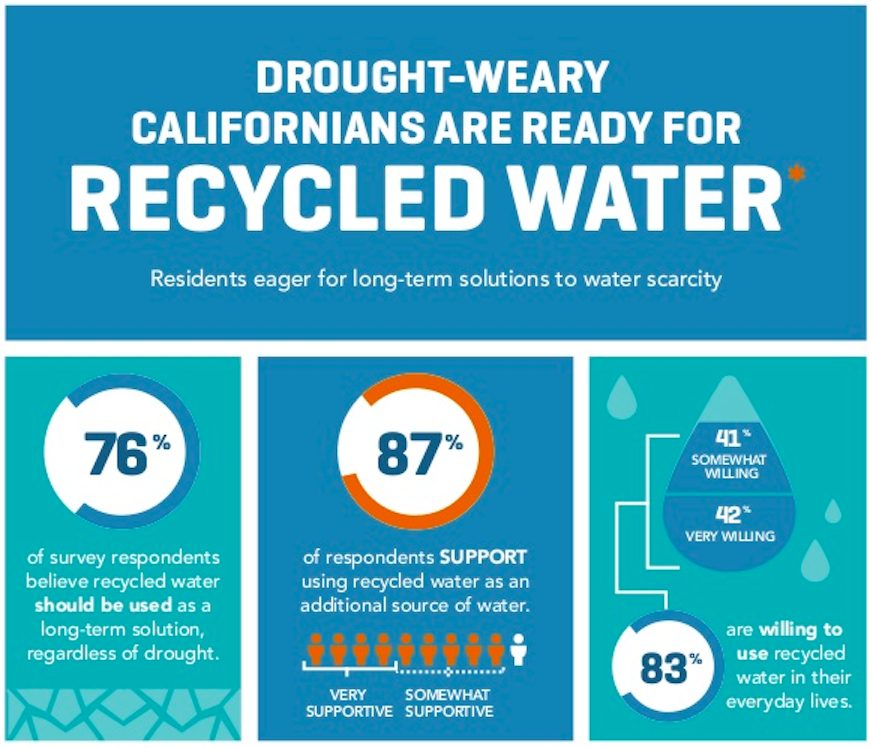Water Reuse: A Critical Step on the Path to a Secure Water Future
Water scarcity is one of the most pervasive challenges facing communities around the world. A recent study by the American Association for the Advancement of Science found that 71 percent of the world’s population experience drought every year, with half a billion people facing severe water scarcity all year round. With the global population expected to reach nine billion by 2050, we can expect an even greater strain on our ability to deliver fresh, safe and clean water where it is needed. Paving the way to a secure water future is no longer an option, it is a priority.
At Xylem, we believe that resilience to water scarcity will require a range of solutions, including economic incentives, regulatory measures and innovative technologies. One proven approach to help meet growing water demands, while safeguarding existing water supplies is water reuse. Water reuse technologies produce high-quality water at a lower life-cycle cost than developing a new water supply, and deliver a resilient, drought-resistant water source with valuable economic and environmental benefits. Advanced treatment technologies are demonstrating that wastewater can be purified beyond drinking water standards and reused safely and economically for both potable and non-potable purposes.
In the U.S., the state of California is now battling its fifth year of intense drought, as the effects of climate change continue to take hold on the region. In response, California is driving the agenda in innovative water management strategies, including water reuse. In an effort to better understand Californians’ perceptions about recycled water and their knowledge of the technology used to produce it, we commissioned an independent private poll of 3,000 California residents. The findings are eye-opening.
California residents were overwhelmingly supportive of using recycled water, or treated wastewater, in their everyday lives. 76 percent of respondents believe recycled water should be used as a long-term solution for managing water resources, regardless of whether or not a water shortage continues. 87 percent support using recycled water as an additional local water supply, and 83 percent are willing to use recycled water in their everyday lives. Nearly 90 percent of surveyed Californians believe the state should continue to invest in recycled water even if the El Niño weather pattern brings the increased rainfall that has been predicted.
These findings may not seem surprising given the severity of the drought experienced in California and its impacts. Residents and businesses have had to manage through mandatory conservation measures, and the state has sustained a reported statewide revenue loss of $2.7 billion, with 18,600 jobs impacted.
The survey points to the important role of education in increasing support for recycled water. After respondents read a statement explaining the treatment processes used in the water reuse process, 89 percent were more willing to use recycled water in their daily lives. Furthermore, 88 percent agree that seeing a demonstration of the water purification process would make them more comfortable using and drinking recycled water.
While our survey was specific to California, we believe the findings have global implications. As the impacts of climate change continue to take hold, now is the time to educate communities about the benefits of recycled water. By pointing to successful water reuse strategies around the globe, we can demonstrate the potential of water reuse technologies for both non-potable and potable applications and help build acceptance for this proven approach. And there is no shortage of examples.
Operating under a stage five drought last year, Texas became the first state in the U.S. to build a direct potable reuse facility, treating and recycling millions of gallons of wastewater annually. The Orange County Water District, located south of Los Angeles, treats wastewater to meet drinking water standards and then the treated water is injected back into the aquifer, where it is later withdrawn along with other groundwater, for supplying drinking water. In Los Angeles, the Terminal Island Water Reclamation Plant treats wastewater from more than 100 businesses in the heavily industrialized Los Angeles harbor area and from 130,000 residents in surrounding areas. Advanced water reuse technologies are in use at the plant to ensure compliance with California’s rigorous groundwater recharge regulations for indirect potable reuse to ensure protection of human health.
Outside of the U.S., countries such as Israel and Singapore, who have struggled with water shortages, have also successfully adopted water reuse practices. Only a few years after establishing its Water Authority, Israel is leading the world in the use of salvaged water, effectively recycling 80 percent of household wastewater for agricultural use. In Singapore, a new membrane technology is being used to treat wastewater. After just a decade, the technology is being used to meet 30 percent of Singapore’s water needs, with plans to triple volumes by 2060.
When it comes to tackling climate change, many of the challenges facing us represent unfamiliar ground. We can be encouraged, however, by the fact that technologies and expertise to help ease the impact of drought already exist. The priority therefore should be to increase education about the benefits of water reuse and support communities in the adoption of these technologies, as they embark on their journey to a secure water future.


